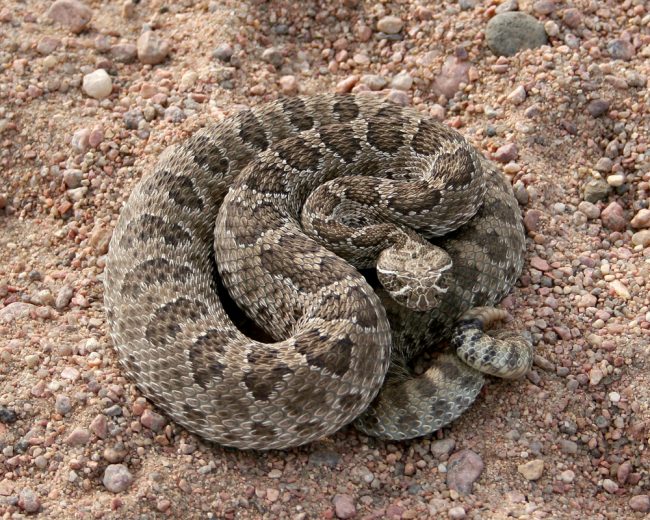During the summer, it's typical for most Coloradans to go outside and enjoy the beauty of our state by going on biking and hiking trips. Unfortunately, that means you have the potential of coming across a venomous rattlesnake.
There are plenty of different hikes you can do in Colorado, but there are some precautions we want to warn you about when you venture out on these trails. While most snakes are relatively harmless – as long as you leave them alone – there's always the chance of running into a rattlesnake on the trail. On the off chance you do come across one of the venomous slithering creatures, here are some do's and don'ts you should follow ...
Be aware of where you're walking
Don't step or place your hands where you can't see what you're touching. If you can, walk on logs and rocks. Also, check your surroundings (i.e., stumps or logs) before sitting down and shake out your sleeping bag if you're camping anywhere.
Wear the appropriate clothing
You typically don't wear flip-flops while hiking, and if you do, we have just one question for you, "why?" Be smart and proactive. Wear sturdy and closed-toe shoes when walking on trails and especially when you find yourself in more brushy, wild areas. Take that simple step of protecting yourself! (pun intended!) As tempting as it may be to wear shorts and work on your tan during a hike, please wear loose-fitting long pants to protect your legs. Startled rattlesnakes do not announce themselves (by rattling) before striking in defense.
Keep your furry friends on a leash
Protect your canine companions by keeping them on a leash. The risk of getting bit is increased in dogs because they hold their noses to the ground while getting a feel for the surrounding area. Keep them close and be aware of where they venture off to.
 Now that you've been given some tips on how to avoid rattlesnakes, you're probably asking yourself what you should do in case you get bitten. In any snake bite case, you should treat every one as serious and proceed accordingly. First off, we'll share with you the snake bite symptoms. View the full list here.
Now that you've been given some tips on how to avoid rattlesnakes, you're probably asking yourself what you should do in case you get bitten. In any snake bite case, you should treat every one as serious and proceed accordingly. First off, we'll share with you the snake bite symptoms. View the full list here.
Symptoms of a Rattlesnake Bite
- Bloody wound discharge
- Fang marks or swelling at the wound site
- Severe localized pain
- Dizziness
- Nausea and vomiting
- Fever
- Numbing and tingling
- Extreme burning sensation
Now that the symptoms have been identified, what additional steps should you take?
First Aid Procedure
- **Contact medical help as soon as possible!**
- It's important to keep the bite victim as calm and as still as possible. Make sure their movement is restricted and the affected area is at or below heart rate level – this reduces the flow of venom in the system. It helps to create a loose sling to restrict movements.
- Take off any constricting items or clothing, such as rings, due to the affected area's potential for swelling.
- This next step may seem odd, but it definitely helps the venom to leave the system. Let the bite bleed freely for at least 15 to 30 seconds before cleaning.
- Keep an eye on the bite victim's vitals – temperature, heart rate, breathing abilities, and blood pressure (if possible). Also, be aware of any signs of shock, such as sweating, clammy skin or shallow breathing.
- Avoid looking for the rattlesnake since this increases the risk of an additional bite. However, it is crucial for treatment to know the type of snake, so do your best to remember the snake's appearance.
**When contacting medical assistance, it is important to try and identify the snake so the hospital is aware of what type of anti-venom is needed. You can also call the National Poison Control Center at 1-(800)-222-1222. It's a national hotline that allows you to speak with experts during any type of poisoning. They're available 24/7. Are there any helpful tips that we missed on our list? Share them with us! Stay safe out there, Colorado!
